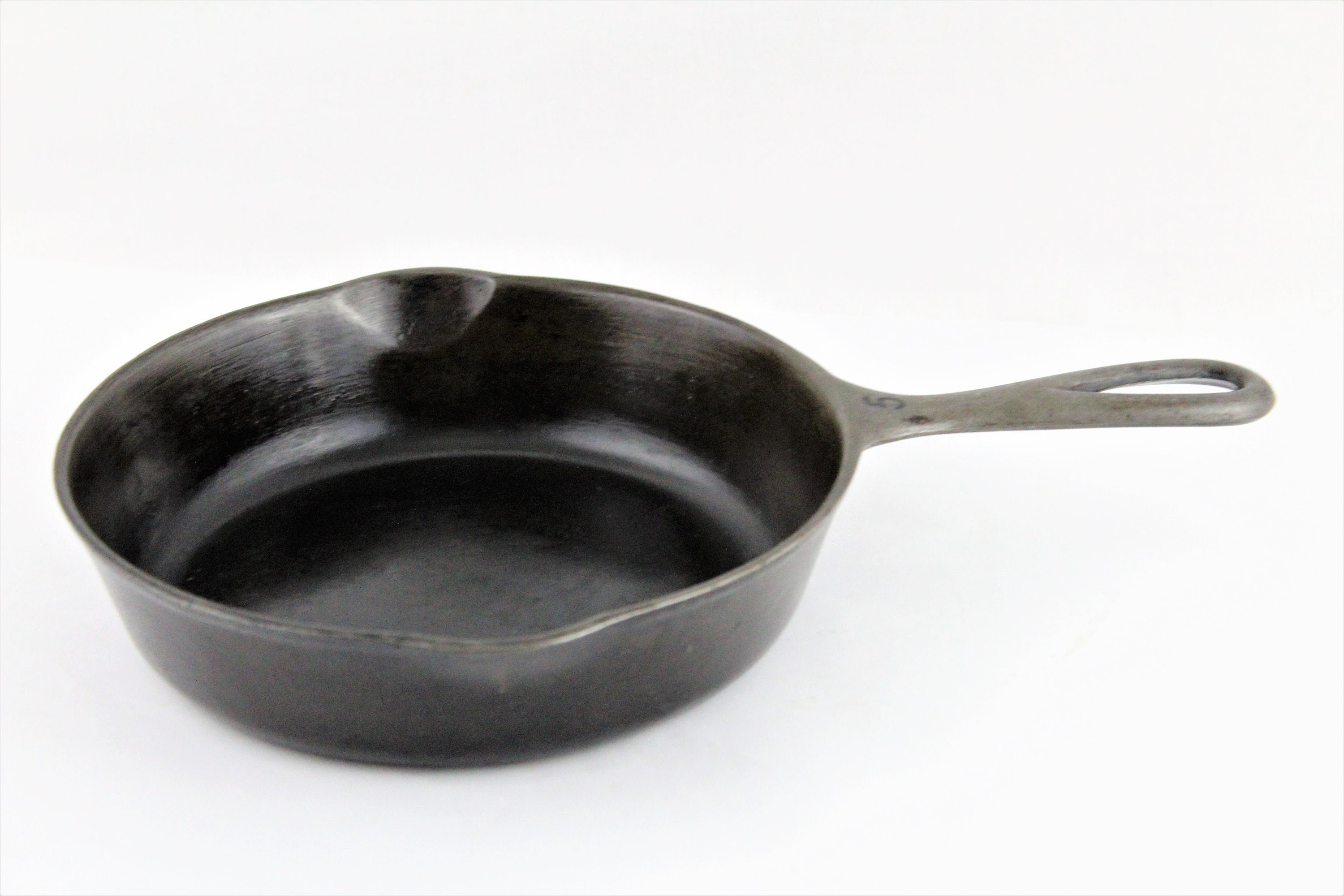In the heart of my grandmother’s quaint farmhouse kitchen, the air crackled with the comforting aroma of sizzling bacon wafting from a century-old cast iron skillet. Every Sunday, this venerable vessel held sway on the stovetop, an artifact of both family heritage and culinary prowess.

Image: www.pinterest.com
Vintage cast iron skillets, emblems of durability and unwavering reliability, have graced kitchens for centuries, showcasing a symphony of history, functionality, and culinary excellence. Let us delve into the captivating world of these timeless cooking companions.
History and Legacy
Cast iron skillets trace their lineage back to ancient China, where they were initially forged for the practical purpose of smelting metals. However, their culinary prowess was soon discovered, and over the eons, they became indispensable kitchen tools across cultures and continents.
In America, the cast iron skillet experienced a golden age during the 19th century, when it found favor among the settlers of the rugged frontier. Its ability to withstand harsh conditions and deliver unmatched heat retention made it an ideal companion for pioneers on the go. Whether it was for searing succulent steaks over an open fire or baking fluffy biscuits in a makeshift oven, the cast iron skillet rose to every occasion.
Advantages of Vintage Cast Iron Skillets
What sets vintage cast iron skillets apart from their modern counterparts is a constellation of distinct advantages:
- Unmatched Heat Retention: The thick walls of vintage cast iron skillets absorb and evenly distribute heat, preventing hot spots and ensuring consistent cooking.
- Indestructible Durability: Made from durable iron, these skillets can withstand years of heavy use and inherit an endearing patina that adds to their charm and cooking abilities.
- Versatile Functionality: Cast iron skillets are true culinary workhorses, capable of tasks ranging from sautéing and baking to roasting and frying – a kitchen jack-of-all-trades.
- Flavorful History: Seasoning, a layer of polymerized oil that develops over time, is the hallmark of vintage cast iron skillets, imparting an unrivaled depth of flavor to every culinary creation.
Trends and Developments
While classic cast iron skillets remain a beloved staple in many kitchens, new innovations have emerged in recent years, most notably the pre-seasoned skillet.
Pre-seasoning reduces the hassle associated with seasoning a raw skillet, making it easier for home cooks to enjoy the benefits of cast iron without the lengthy preparation process. Another trend is the mini cast iron skillet, a charming and versatile addition to any kitchen arsenal.

Image: www.riverratantiques.com
Tips and Expert Advice
To maximize your vintage cast iron skillet experience, consider the following expert tips:
- Proper Seasoning: The key to a well-seasoned skillet is regular use and affectionate care. Clean your skillet with hot water and minimal soap, and always re-apply a thin layer of oil after each use.
- Gradual Heating: To prevent warping or cracking, gradually heat your cast iron skillet on medium-low heat. Patience is a virtue here! Avoid exposing it to extreme temperature changes.
- Metal Utensils: While cast iron is robust, it’s best to avoid metal utensils. Instead, opt for wooden or silicone tools to preserve its seasoning and prevent scratches.
- Unseasoned Exceptions: Acidic foods like tomatoes or citrus can strip the seasoning from your skillet. For these culinary adventures, use enameled cast iron cookware instead.
Vintage Cast Iron Skillet
FAQ
1. How can I identify a vintage cast iron skillet?
Usually, vintage cast iron skillets have markings on the bottom that indicate their age and manufacturer. If no marking is found, the texture of the cooking surface may hold clues about its vintage.
2. How do I restore a rusty cast iron skillet?
Start by scrubbing off as much rust as possible with a stiff brush. Then, re-season your skillet by applying a thin layer of oil and baking it in an oven. Repeat this process until the rust is gone and you have a new seasoning layer.
3. How do I season a pre-seasoned cast iron skillet?
Pre-seasoned skillets typically require minimal additional seasoning. Simply wash the skillet thoroughly